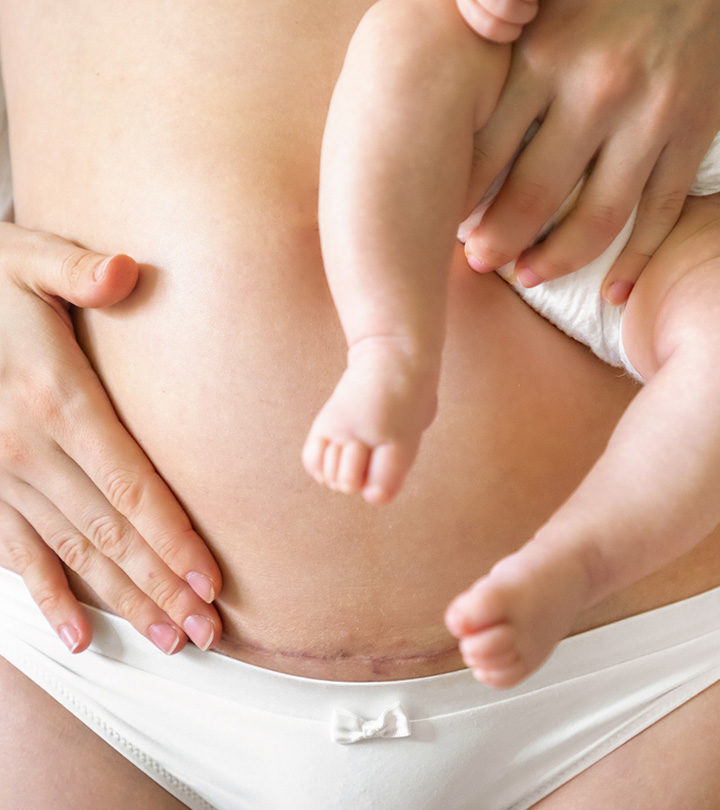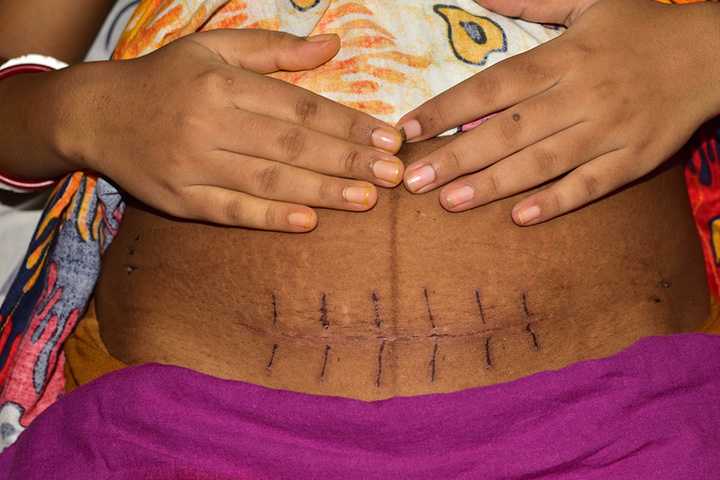
Image: iStock
Childbirth is the most magical and surreal experience that a woman goes through. And although the bundle of joy you finally get after all the mayhem makes it worth every minute of labor, sometimes, the process of giving birth to your precious little baby can be quite challenging and scary. Take C-sections for example, this child delivery method accounts for 1 in 5 childbirths globally, according to the World Health Organization (WHO) (1). But that doesn’t mean that it doesn’t come with its set of complications and health problems that may stay with you well after you’ve delivered your baby. But if you want to know everything that entails getting a C-section and if it’s normal to experience some swelling on your incisions, then this is the article for you. Read on to know more.
What Is A C-Section And Is Swelling Above The Incision Normal?
A C-section involves two surgical incisions- one cut in the abdomen area and another one on the uterus. The abdominal cut is usually a vertical incision starting from your navel and going all the way down to your public hair or in some cases, it could be a horizontal cut on your lower belly area, also called the bikini cut. Medical experts state that mild swelling around the incision areas is normal and common for several weeks following a C-section. The problem. however, arises when the swelling is accompanied by infection on the site of the incision (3). This type of infection may occur within 30 days after having undergone the procedure. But this can sometimes be mistaken for the widespread swelling that women experience after childbirth. This happens due to the fact that the body almost doubles the blood volume in order to support a successful pregnancy and that’s not something that goes away in one day (4).
Here’s how you can assess if the swelling around your C-section is normal or could have the potential to turn infectious.
What Does Normal C-Section Swelling Look Like?
Often in the postpartum period, many women report experiencing some general swelling due to the C-section. This is mostly around the feet and ankle areas. It happens due to the fluid accumulating in concerned areas as a pregnancy aftereffect and the IV fluids from the surgical procedure. This swelling usually goes down in time and your body will return to normal as the excess fluids are gradually released. However, if you notice swelling on just one of your legs then it’s best to seek medical attention immediately. It is ideal to consult your doctor for swelling in other places like the palms, face, and eye area following a C-section, as these may be symptoms of postpartum preeclampsia, that is, high blood pressure that occurs soon after pregnancy (5).
What To Know About C-Section Swelling At The Incision
Image: IStock
Infections on surgical sites often look like hematoma and seroma, which can result in swelling above the incisions (6). Hematoma is characterized by the accumulation of blood, whereas seroma refers to the fluid build-up just under the skin surrounding the incision site. Both these cases increase the risk of the stitches of the c-section opening up prematurely, making it vulnerable to bacterial contamination. Some signs of having an infection in your incisions are:
- Experiencing localized pain or tenderness
- Localized swelling in the spot right above the incision site
- Heat, your skin is unnaturally hot to the touch
- Redness around the incision site
Risk Factors That Can Lead To A Surgical Site Infection
- Emergency delivery
- History of C-section
- Excessive blood loss during delivery
- Labor period longer than 12 hours or surgery time extending beyond 38 minutes
- Incision length larger than 16.6 cm
- Health conditions like pregestational/gestational diabetes and hypertension
- Lack of proper prenatal care
- Lack of preoperative antibiotics used as a measure against infections
Having a baby might be incredible but the journey may also be filled with setbacks and complications that you didn’t see coming. And although we all hope that our birth plan plays out to the T, sometimes an emergency C-section can’t be avoided. This is why it’s important to rest well and give your body time to heal after delivery. Even if you do have a surgical site infection, follow doctor’s orders and take it easy. You and your baby will be back in good form in no time at all!














